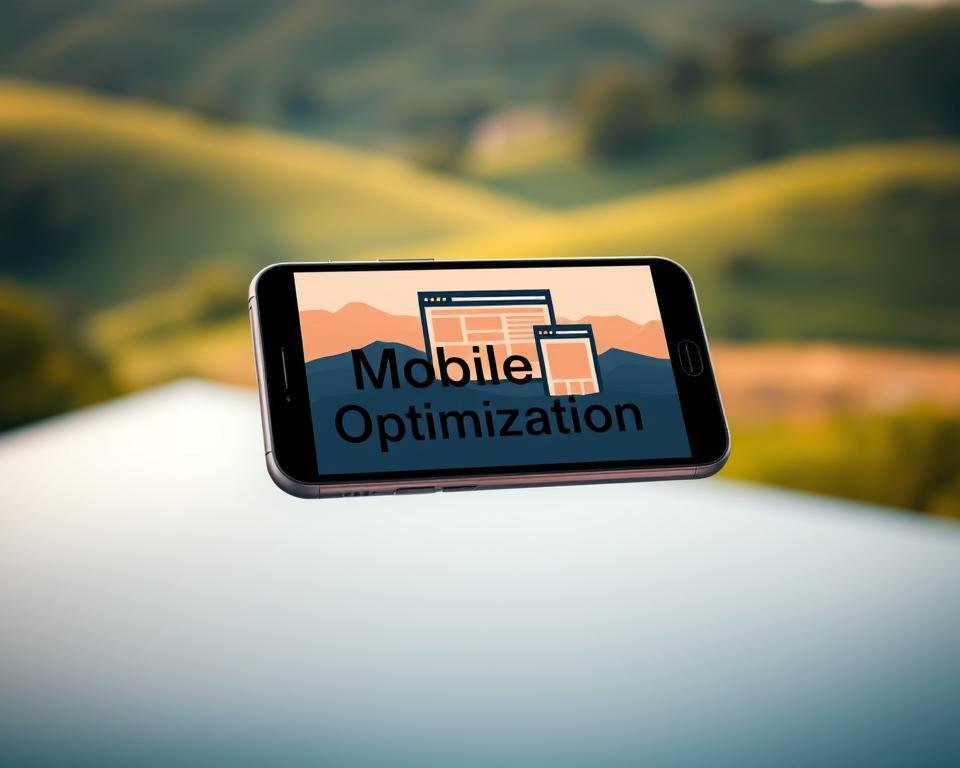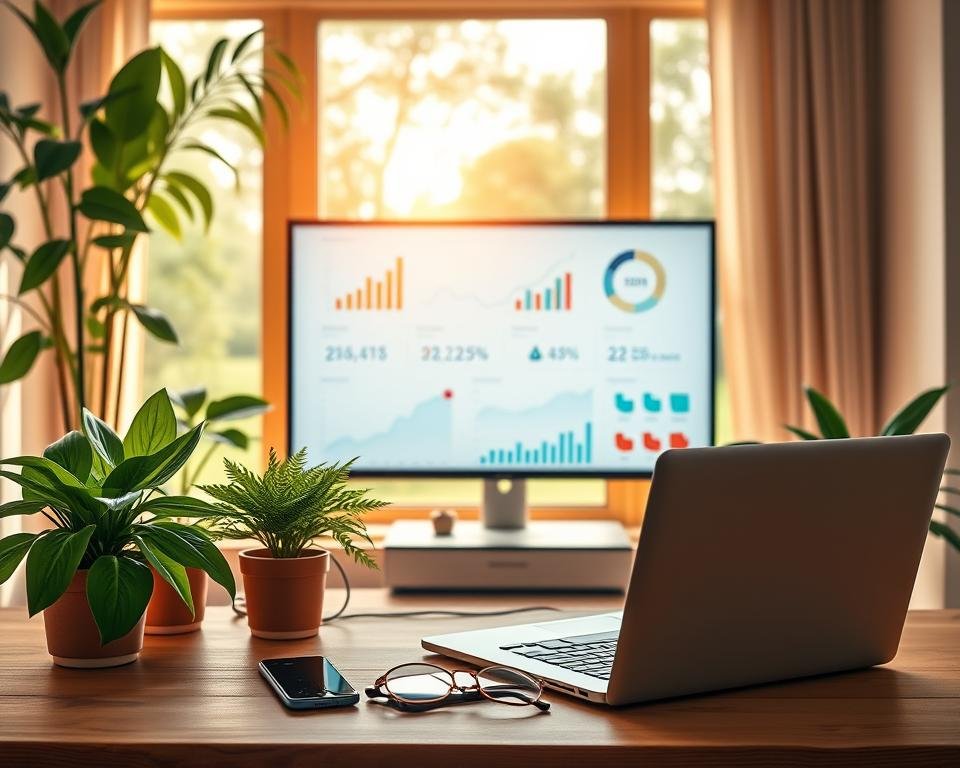As a health and wellness blogger, I’m always searching for ways to grow my online presence. I want to attract more readers to my blog. One key way is by using SEO techniques to make my content more visible in search results.
Optimizing my blog for search engines helps me reach more people. It brings more visitors to my site and expands my audience. In this article, I’ll share SEO strategies to boost your health and wellness blog.
Key Takeaways
- Understand the basics of SEO and its importance for health and wellness bloggers
- Learn how to conduct keyword research to optimize your content
- Discover the importance of creating high-quality, engaging content
- Explore on-page and off-page SEO techniques to boost your online presence
- Find out how to measure and analyze your SEO success
Understanding SEO Basics for Health and Wellness
As a health and wellness blogger, knowing SEO basics can really help. It’s key to understand the basics before moving on to more advanced techniques. This knowledge is vital for your blogging success.
What is SEO?
SEO means “Search Engine Optimization.” It’s about making your website better for search engines. This way, your blog shows up in search results when people look for what you write about.
Key aspects of SEO include:
- Understanding how search engines work
- Optimizing your website’s content and structure
- Using relevant keywords effectively
Why is SEO Important in Health and Wellness?
In health and wellness, SEO is very important. It helps you reach people looking for what you know. By optimizing your blog, you can get more visitors and attract readers who care about your topics.
Some benefits of SEO for health and wellness bloggers include:
- Increased online visibility
- Targeted traffic to your website
- Improved credibility and trust with your audience
By learning and using SEO basics, you can start growing your health and wellness blog. We’ll explore more advanced SEO techniques and strategies in the next sections.
Keyword Research for Health and Wellness Topics
To stand out in the crowded health and wellness space, mastering keyword research is key. As a health and wellness blogger, knowing what your audience searches for online boosts your content’s visibility and relevance.
Keyword research is a vital part of SEO. It’s about finding and analyzing the terms your target audience uses to find content like yours. By using these keywords in your blog posts, you can rank higher in search engine results pages (SERPs).
Tools for Keyword Research
Several tools can help with effective keyword research for your wellness blog. Some of the most popular include:
- Google Keyword Planner: A free tool that helps you find keywords and get an idea of their search volume.
- Ahrefs: Offers detailed keyword research, including analyzing competitors and finding content gaps.
- SEMrush: Provides a range of tools for keyword research, competitor analysis, and technical SEO audits.
With these tools, you can discover what your audience is searching for. Then, you can tailor your content to meet their needs.

Long-Tail Keywords vs. Short-Tail Keywords
It’s important to know the difference between long-tail and short-tail keywords. Short-tail keywords are broad terms with high search volumes but are very competitive. For example, “health and wellness” is a short-tail keyword that’s hard to rank for because it’s so broad.
Long-tail keywords are more specific phrases with lower search volumes. They are less competitive and easier to rank for. A good example of a long-tail keyword is “healthy recipes for weight loss.”
Using a mix of both short-tail and long-tail keywords can attract a wider audience. It also helps you capture specific search queries with less competition.
Creating Quality Content for Your Audience
Creating content that adds value to your readers is key to building a loyal following. As a health and wellness blogger, your content must be original, informative, and engaging.
The Importance of Originality
Being original is vital in the crowded health and wellness blogging world. Focus on bringing unique perspectives or insights to health topics. This grabs your audience’s attention and boosts your blog’s search engine ranking, bringing more organic traffic for bloggers.
To stay original, do deep research on your topics. Keep up with the latest health trends, scientific research, and wellness practices. This way, you offer fresh and relevant content that meets your readers’ needs and concerns.
| Content Aspect | Importance | Tips for Improvement |
|---|---|---|
| Originality | High | Conduct thorough research, offer unique perspectives |
| Engagement | High | Use storytelling, ask questions, encourage comments |
| SEO Optimization | Medium | Use relevant keywords, optimize meta tags and descriptions |
How to Write Engaging Health Topics
To write engaging health topics, understand what your audience likes. Identify topics that interest them by using social media and comments. This helps you know what they care about.
When you pick a topic, make the information easy to understand and fun. Use stories, examples, or infographics to make complex health info interesting. Your goal is to make it easy and enjoyable for your readers.

Balancing Information with SEO Best Practices
It’s important to provide valuable info while also optimizing for search engines. Use SEO strategies for bloggers in your content naturally. This means using the right keywords, optimizing meta tags, and using header tags.
Make sure your content is easy to read and understand. Avoid stuffing keywords and focus on a natural flow. This improves your content’s visibility and makes your blog a better experience for users.
On-Page SEO Techniques for Wellness Blogs
To stand out in the crowded health and wellness space, mastering on-page SEO techniques is essential. As a blogger, your goal is to make your content not only informative but also easily discoverable by those seeking health and wellness advice.

Optimizing Meta Tags and Descriptions
Optimizing your meta tags and descriptions is key. Meta tags provide search engines with important info about your page’s content. Meta descriptions make users want to click from search engine results pages (SERPs). Make sure your meta tags are descriptive and include relevant keywords to boost your blog’s visibility.
Importance of Header Tags
Header tags (H1, H2, H3, etc.) are vital for structuring your content. Using header tags effectively highlights key points and organizes your content. This makes it easier for readers to navigate your blog posts.
Using Internal and External Links
Adding internal and external links to your blog posts is another great technique. Internal linking improves user experience by guiding readers to related content on your site. External links to authoritative sources boost your blog’s credibility and authority on a topic.
By using these on-page SEO techniques, you can improve your wellness blog’s search engine rankings. This will attract more targeted traffic. Remember, the key to successful SEO is consistency and continuous optimization.
Off-Page SEO Strategies for Health Bloggers
To make your health blog more visible, focus on off-page SEO. This means doing things outside your website to boost your rankings. Off-page SEO helps drive more traffic and engagement to your blog.
Building a strong backlink profile is key. Backlinks are links from other sites to yours. They tell search engines your content is valuable.
Building a Strong Backlink Profile
A good backlink profile shows your blog is trusted and credible. Here’s how to build one:
- Guest Blogging: Write for other health blogs to get backlinks.
- Content Partnerships: Work with other bloggers or influencers for backlinks.
- Resource Pages: Make resource pages on your blog that link to quality sites. This might get others to link back to you.
Guest Blogging Opportunities in Wellness
Guest blogging is great for backlinks and reaching more people. Here’s how to start:
- Find good wellness blogs that want guest posts.
- Write engaging, valuable content for the host blog.
- Put a link back to your blog in your bio or in the content.
Using these off-page SEO strategies can really help your blog. You’ll get more visitors and become a trusted voice in health and wellness.

Optimizing Images and Multimedia for SEO
As a health and wellness blogger, I’ve learned how key images and multimedia are for SEO. Today, most online content is seen, not read. So, making images and multimedia better is key to getting your blog seen more.
Optimizing images and multimedia does more than just look good. It also helps your blog rank better in search engines. By adding the right keywords and descriptions, your content is more likely to pop up in image and video searches.
Best Practices for Image SEO
For image SEO, there are a few important steps. First, use alt tags that have your target keywords. This tells search engines what your image is about.
Also, use file names that have your target keywords. Instead of “image1.jpg,” name it “healthy-salad-recipe.jpg.” This helps search engines know what your image is about and can make it show up more in searches.
Lastly, compress your images to make your site load faster. Big images can slow down your site, hurting your rankings. By making images smaller, you keep your site fast and your rankings up.
| Best Practice | Description | Benefit |
|---|---|---|
| Descriptive Alt Tags | Use alt tags that include target keywords | Improves image search visibility |
| Keyword-Rich File Names | Use file names that include target keywords | Enhances image search relevance |
| Image Compression | Compress images to reduce file size | Improves page load times |
Utilizing Video and Podcasts Effectively
Video and podcasts are also great for SEO. They make your blog more engaging and can help it get seen more.
When using videos, optimize their titles, descriptions, and tags with keywords. This helps search engines find your video and show it in video searches.
Podcasts are another way to reach more people and bring them to your blog. By optimizing podcast titles, descriptions, and tags, you can get more listeners and improve your blog’s visibility.
By following these tips and adding multimedia to your blog, you can boost your SEO. Keep up with the latest SEO trends to stay ahead.
Local SEO for Health and Wellness Practitioners
Getting local clients to your health and wellness practice starts with a good local SEO plan. Your online presence is key to reach people in your area looking for your services.
Why Local SEO Matters
Local SEO is key because it makes your practice show up in local search results. This targeted method means your site is seen by those most likely to become clients.
The benefits of local SEO include:
- Increased visibility in local search results
- More targeted traffic to your website
- Higher conversion rates due to relevance
How to Optimize for Local Searches
To make your site better for local searches, focus on a few key areas. First, make sure your business’s name, address, and phone number (NAP) are the same everywhere online. This makes search engines trust your business’s info.
Another important step is to create content that matters to your local audience. This could be blog posts about local health events, wellness tips for your area, or info on your practice’s local community involvement.
| Local SEO Strategy | Description | Benefit |
|---|---|---|
| NAP Consistency | Ensure your business’s name, address, and phone number are consistent across the web. | Improves search engine trust |
| Local Content Creation | Create content relevant to your local audience. | Increases relevance and engagement |
| Local Citations | Get listed in local directories and citations. | Boosts local search visibility |
By using these local SEO strategies, you can make your practice more visible online. This will help attract more local clients.

Mobile Optimization for Health Blogs
Mobile optimization is key for health blogs. It affects how users feel and how search engines rank your site. Most people look up health info on their phones. So, having a blog that works well on mobile is essential.
Responsive Design Importance
A responsive design makes your blog fit any screen size. This gives your readers the best experience. It’s important for keeping visitors and getting them to interact with your site.
A responsive design is more than looks. It makes sure everything works well, like buttons and menus. This is true no matter what device someone uses.

| Device Type | User Experience | Impact on SEO |
|---|---|---|
| Desktop | Detailed content consumption | High engagement, lower bounce rates |
| Mobile | Quick, on-the-go information seeking | High importance for local SEO, user behavior metrics |
| Tablet | Mix of detailed and quick information access | Contributes to overall site usability and ranking |
Page Speed and Its Impact on User Experience
Page speed is very important for both user experience and SEO. A slow page can make people leave quickly. This hurts your ranking in search engines.
To make your page faster, you can optimize images and use browser caching. You can also reduce the size of CSS and JavaScript files. This will make your site faster and keep visitors longer.
Using tools like Google PageSpeed Insights can help you find ways to make your site faster. This will make your users happier and more likely to stay on your blog.
- Optimize images to reduce file size
- Leverage browser caching to store frequently-used resources
- Minimize and compress CSS and JavaScript files
Utilizing Social Media for SEO Benefits
Using social media in your SEO plan can boost your online presence. It helps attract more readers. Social media offers a big chance to share your content and talk to your audience.
One key way to use social media for SEO is to share your content on different platforms. This helps you reach more people. It also makes them more likely to share and link back to your blog, which is good for SEO.
Promoting Content on Social Platforms
Sharing your content on social media is more than just posting links. It’s about having a solid plan. This includes:
- Sharing interesting parts or quotes from your blog posts
- Using the right hashtags to be found more easily
- Tagging influencers or brands that are relevant
- Sharing sneak peeks or behind-the-scenes content
Good content promotion on social media can really help your blog get seen more. It also brings more people to your site.
| Platform | Content Type | Engagement Strategy |
|---|---|---|
| Detailed posts, images | Ask questions, host live sessions | |
| Short snippets, hashtags | Participate in trending conversations | |
| Visual content, stories | Use Instagram Stories, engage with followers |
Engaging with Your Audience Online
Talking to your audience is key to building a loyal group. It also helps your blog’s SEO. By answering comments and questions, you create a strong community around your blog.

By talking to your audience and sharing your content well on social media, you can get big SEO benefits. These include better online visibility and more people visiting your blog.
Understanding Analytics and SEO Performance
Getting to know analytics is key to making my health and wellness blog better. By looking at my blog’s performance, I can find areas to improve. This helps me make smart choices to boost my SEO.
To track my blog’s performance well, I need to watch important metrics. These metrics show how readers interact with my content. It’s not just about the numbers, but what they mean for my blog.
Key Metrics to Track
There are several key metrics to understand my blog’s SEO. These include:
- Page views: The total number of times my blog’s pages are viewed.
- Bounce rate: The percentage of visitors who leave my site without taking further action.
- Average session duration: The average amount of time visitors spend on my site.
By keeping an eye on these metrics, I can see what’s working and what’s not.
| Metric | Description | Importance |
|---|---|---|
| Page Views | Total views of my blog’s pages | Indicates overall traffic |
| Bounce Rate | Percentage of visitors who leave without further action | Reflects content relevance and user engagement |
| Average Session Duration | Average time spent on my site | Shows how engaging my content is |
Using Google Analytics for Insights
Google Analytics is a powerful tool for understanding my blog’s performance. It lets me track important metrics and more.
To get the most from Google Analytics, I need to set it up right. I also need to regularly check the data it gives me. This means knowing how to use the platform, finding the right metrics, and using the insights to improve my SEO.
By combining Google Analytics data with my SEO knowledge, I can keep making my blog better.
Common SEO Mistakes to Avoid in Wellness Blogging
To succeed in wellness blogging, it’s key to know and avoid common SEO mistakes. As a health and wellness blogger, your online presence is key to attract and keep an audience. But, many SEO pitfalls can make your blog less visible and less effective.
Overlooking Content Quality
One big SEO mistake is ignoring content quality. High-quality, engaging content is key to keep your audience’s interest. Bad content can cause high bounce rates, less engagement, and lower search engine rankings.
To avoid this, make sure your content is well-researched, informative, and fun. It should meet your audience’s needs and concerns. Also, make sure it’s original, well-organized, and free of mistakes.
| Content Quality Aspect | Best Practice | Impact on SEO |
|---|---|---|
| Originality | Use plagiarism detection tools | Improves credibility and ranking |
| Research | Cite credible sources | Enhances authority and trust |
| Engagement | Use compelling headlines and meta descriptions | Increases click-through rates and reduces bounce rates |
Ignoring Mobile Users
Ignoring mobile users is another big SEO mistake. Most people use the internet on their phones. Make sure your blog works well on mobile devices with a responsive design.
A mobile-friendly website is better for users and search engines. Google likes websites that work well on phones. So, it’s very important for wellness bloggers to make their sites mobile-friendly.
By avoiding these common SEO mistakes, you can make your blog more visible. You’ll get more targeted traffic and be seen as an expert in wellness blogging.
Continuing Education and Staying Updated on SEO
As a health and wellness blogger, I must keep learning to stay ahead. I update my knowledge to keep my blog competitive. This helps attract more visitors.
I look for many ways to learn about SEO. I take online tutorials and workshops. These help me understand SEO better and keep up with new changes.
Resources for SEO Knowledge
I use trusted sites like Moz, Ahrefs, and SEMrush. They offer guides, webinars, and training. These help me learn the newest SEO strategies.
Engaging with Health Blogging Communities
I also join health blogging communities. This keeps me in the loop with the latest health and wellness news. I talk with other bloggers and experts, learning a lot.
Learning SEO and joining blogging communities helps my blog stay current. It keeps my audience coming back.
